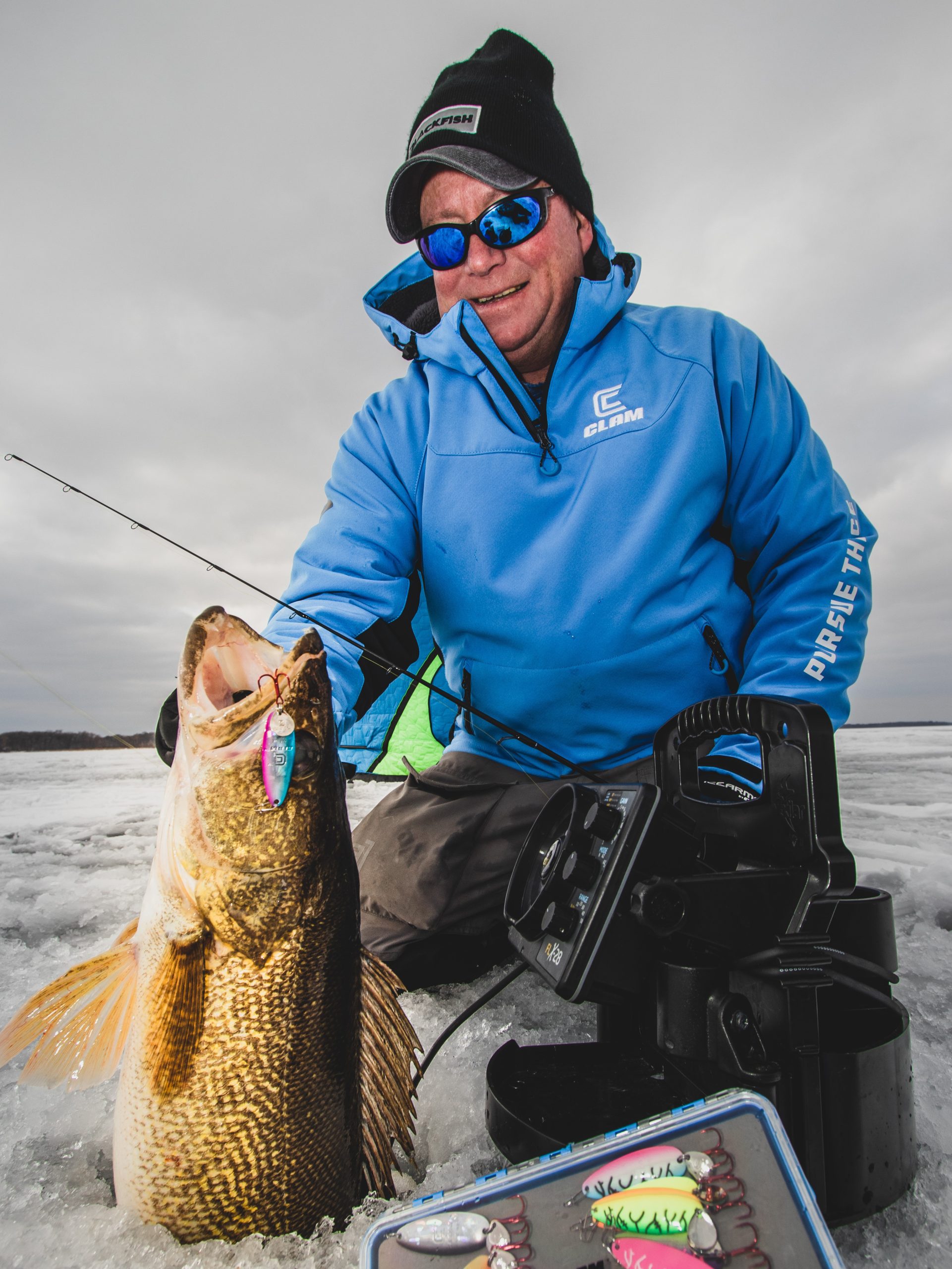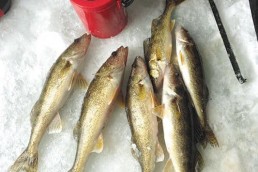Early-Ice Walleyes
SHARE THIS POST
Interest in fishing for walleyes is growing and diversifying. For sure, lakes in some regions are going to freeze over in the winter months. Walleye enthusiasts who live in these areas get especially excited about fishing through early ice for walleyes. When you’re sure that the ice is safe, here’s how to catch walleyes early in the ice fishing season.
Start looking for early-season ice walleyes in the same areas where you caught them late in the open-water season. If the walleyes were there in late open water, they’ll usually still be there, at least for a while. Points, sunken islands and the edges of flats can all produce.
If you’re fishing shallow water, a quiet approach will be most productive. Shallow-water walleyes, and fish in general, can get spooked by too much noise or commotion overhead. On the other hand, if you’re fishing deeper, say 15 feet or more, you can move around without as much risk of spooking the walleyes. However, it works best to pop a bunch of holes along and over the structure before you start fishing. Get the noisy activity out of the way before you drop a line.
Different anglers have different ideas about walleye fishing through the ice. Some like to sit on a spot and hope the walleyes come to them; others like to move around and try to find the fish. Here’s a good rule-of-thumb: Early in the season, sit still or move a little. Wait ’em out. As the season progresses, the ice gets thicker and the snow cover increases, anglers who move around will get more action.

Many anglers use a spoon of some sort for early-ice walleyes. Actually, spoons are a big part of a walleye angler’s arsenal the entire ice season. But spoons have different characteristics, and those characteristics appeal to walleyes in different ways.
Are you enjoying this post?
You can be among the first to get the latest info on where to go, what to use and how to use it!
Rattling spoons are very popular. In stained water, the rattling noise helps fish your bait. In clear water, the rattle will attract fish from farther away. The new Rattlin’ PT Spoon has a painted hook that adds to the flash.
A spoon’s design and materials affect how it falls. Spoons like a Ribbon Leech Flutter Spoon, as the name suggests, has a distinct flutter as it slowly falls. A Pinhead Spoon is built to fall faster with less flutter. Both have a very important role in fishing through the ice for walleyes.
There’s no doubt that sonar will enable you to catch more fish. At times, a walleye will come in and look at your spoon but not eat it. Sonar reveals this. When a fish looks at your spoon but doesn’t eat it, it will often eat a minnow on a plain hook.
When you initially set up on a spot, drill two holes. Work the spoon under one hole and put a minnow under a bobber down the other hole. When walleyes come in and look, but don’t eat the spoon, they’ll often eat the minnow. Vexilar makes several units that enable anglers to see an expanded area of the water column, and that helps turn the lookers into biters.
Some very accomplished ice-anglers feel that the early-ice period is best for ice fishing. Find out for yourself how good early-ice action for walleyes can be.
MWO
SHARE THIS POST
Did you enjoy this post?
You can be among the first to get the latest info on where to go, what to use and how to use it!
Bob Jensen
To see the latest episodes of “Fishing the Midwest” television, new fishing-related tips and articles from the past, visit fishingthemidwest.com. Follow them on Facebook @fishingthemidwest for fishing information and entertainment.



